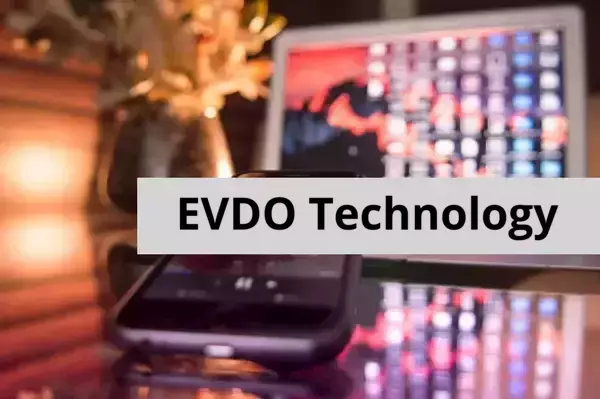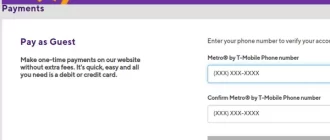EVDO is a 3G standard designed to provide high-speed data to CDMA-based networks. It is part of the CDMA2000 1x digital wireless standards family and was developed by Qualcomm. Initially, EVDO stood for “Evolution Data-Only,” but later it was referred to as “Evolution Data-Optimized.”
Unlike some 1x standards, EVDO solely addresses data, not voice. It requires a dedicated radio frequency range separate from voice networks using standards such as 1xRTT. EVDO provides data rates over 10 times faster than the previous CDMA data technology, 1xRTT. In terms of technology evolution, the closest equivalent to EVDO for GSM/WCDMA networks would be HSDPA.
EVDO is a high-speed wireless protocol for mobile devices, known alternatively as EV-DO, 1xEvDO, and CDMA2000 High Rate Packet Data Air Interface. It is one of several major Third Generation (3G) wireless data standards.
With EVDO technology, mobile devices can transmit voice and data quickly, and the technology is always on whenever there is a signal from the wireless tower. Unlike a Wi-Fi® connection, a device with EVDO does not need to be near a wireless hotspot. Instead, the cell phone itself can become a hotspot and share its Internet connection with other devices.
3G networks are designed to transmit voice and high-speed mobile data to people on the go.
Evolution Data Only (EVDO) Explained
Evolution Data Only (EVDO) is a wireless network standard that enables high-speed internet connectivity primarily for connecting to the internet. It is a protocol comparable to DSL or cable internet service and offers high speed broadband. EVDO is a 3G mobile broadband technology designed for the CDMA2000 network and was standardized by the 3 Generation Partnership Project 2 (3GPP2).
The official name assigned to this standard is CDMA2000 high rate packet data air interface, and it was developed to provide high-speed wireless data services. This standard was designed for voice services and was created to support high data rates. EVDO uses the same broadcasting frequency as CDMA networks providing an advantage over competing standards. It can be used with certain classes of cellular phones and various external hardware such as laptops, modems, and handheld devices.
The current revision of the EVDO standard, revision A, provides a download speed of up to 3.1 Mbps and an upload speed of up to 0.8 Mbps. This revision is being improved to offer even higher data rates. EVDO is used by major carriers such as Verizon, Sprint, and a large network in Korea. Although it is not as popular in Europe and parts of Asia, it is a reliable and efficient wireless communication technology.
The Technical Details of EVDO
EVDO, or Evolution Data Only, is a wireless communication standard designed for high-speed broadband and primarily used for Internet connectivity. It is comparable to DSL or cable Internet service, offering fast download and upload speeds. EVDO was standardized by the 3 Generation Partnership Project 2 and is designed for use with the CDMA2000 network. The technology separates data into packets to save bandwidth, similar to the Internet Protocol.
Additionally, EVDO uses the same broadcasting frequency as CDMA networks, allowing multiple devices to simultaneously transmit on the same frequency. The current revision of the EVDO standard, revision A, offers download speeds of up to 3.1 Mbps and upload speeds of up to 0.8 Mbps, with even higher rates being developed.
EVDO technology can be used with cellular phones, laptops, modems, and handheld devices. Major carriers deploying EVDO in the US include Verizon, Sprint, and a large network in Korea.
However, it is not as popular in Europe and parts of Asia.
The Benefits of EVDO Technology
EVDO technology is a mobile network that allows users to access the internet on their mobile devices and laptops at high speeds. This technology is widely used by business professionals, but it is also available to the general public.
One of the primary benefits of this technology is that it enables constant access to important information so that users can stay on top of work-related emails, phone calls, and chat sessions on the go. This seamless access allows business professionals to be notified instantly when a client or superior contacts them, all without needing to be at their computer or in the office.
In addition, EVDO technology offers office features such as word processors, spreadsheets, and presentation software. With these features, changes and edits can be made within the document directly on the phone or laptop. The technology also allows for instantaneous file sharing, no matter where the user is located. EVDO technology is not limited to business professionals but is also helpful for anyone who wants to browse the web, check email, or get directions on the go.
The cost of using the EVDO network is reasonable, and different plans and options are available depending on the frequency of usage. The plans range from unlimited access to a specific number of gigabytes per month. Before taking advantage of the EVDO network, it is important to ensure that the device being used is compatible. Once users are set up, they no longer need to rely on unreliable WiFi hotspots or worry about missing important emails. The EVDO technology provides constant access to vital information and is a great solution for anyone who wants to stay connected while on the go.
EVDO vs. Other Wireless Data Communication Standards
Evolution Data Only (EVDO) is a wireless data communication standard that offers broadband internet access through radio signals. Unlike other wireless technologies, it provides lightning-fast data transmission speeds and allows users to access the internet even when Wi-Fi networks are not nearby. It uses Code-Division Multiple Access (CDMA) and provides one of the highest data rates for mobile devices, making it an ideal technology for multimedia applications.
Compared to other wireless data communication standards like HSPA, EVDO offers faster speeds than dial-up or other wireless technologies, providing high security and better coverage over vast geographic areas due to low power transmission.
However, EVDO requires a compliant device, and the network access fees can be costly for users. It is also not always available in all areas, making coverage patchy.
There are two variations of EVDO technology, Release 0 and Revision A. Release 0 can deliver data rates up to 2.4 Mbps with a typical range between 300-600 kbps, while Revision A reaches download speeds of up to 3.1Mbps and upload speeds up to 0.8 Mbps, allowing online services like VoIP and video calling with minimal latency.
When compared to other technologies, EVDO falls short of the 4G LTE standard in terms of speed and development. However, alongside UMTS, HSPA, GSM, and CDMA, EVDO remains an essential component of wireless networks worldwide. Additionally, this advanced system enables users to stay connected without relying on Wi-Fi or LAN networks and allows individuals to access fast and reliable internet connections at all times.
Major Carriers Deploying EVDO in the US
Major carriers in the US have been deploying EVDO mobile networks as a way of bringing high-speed data to CDMA-based networks. EVDO, which stands for Evolution-Data Optimized, is a 3G standard and part of the CDMA2000 1x family of digital wireless standards.
It provides data rates over 10 times faster than the previous data technology for CDMA networks, 1xRTT. Although it is not as fast as the newer LTE 4G standard, it is still a significant improvement. There are currently two main versions of EVDO available, Release 0 and Revision A, with Revision A being the most recent and offering faster data speeds than Release 0. Carriers have been focusing on deploying Revision A, with some claiming actual download speeds of around 600-1400 kbps. Major carriers in the US deploying this technology include Verizon Wireless, Sprint Nextel, Alltel and US Cellular.
EVDO and Future Developments
EV is a high-speed wireless data transfer protocol used in mobile networks and is also referred to as Evolution Data Only/Optimized. It is a part of the Third Generation (3G) wireless data standards and always remains on whenever there is a signal from the wireless tower.
CDMA2000 High Rate Packet Data Air Interface is the official name given by the Telecommunication Industry Association to this technology. One of its biggest advantages is that the device with EVDO technology doesn’t need to be near a wireless hotspot and can itself become a hotspot, sharing its Internet connection with other devices.
EVDO breaks data into individual packets, and each of these packets is sent independently, saving bandwidth for other devices. The original EVDO protocol, Revision 0, has a theoretical throughput of 2.4 Mbps while the upgrade to Revision A increases the speed to a theoretical 3.1 Mbps.
A third upgrade, Revision B, was released in January 2010, and its developer predicts download speeds as fast as 14.7 Mbps in some situations.







